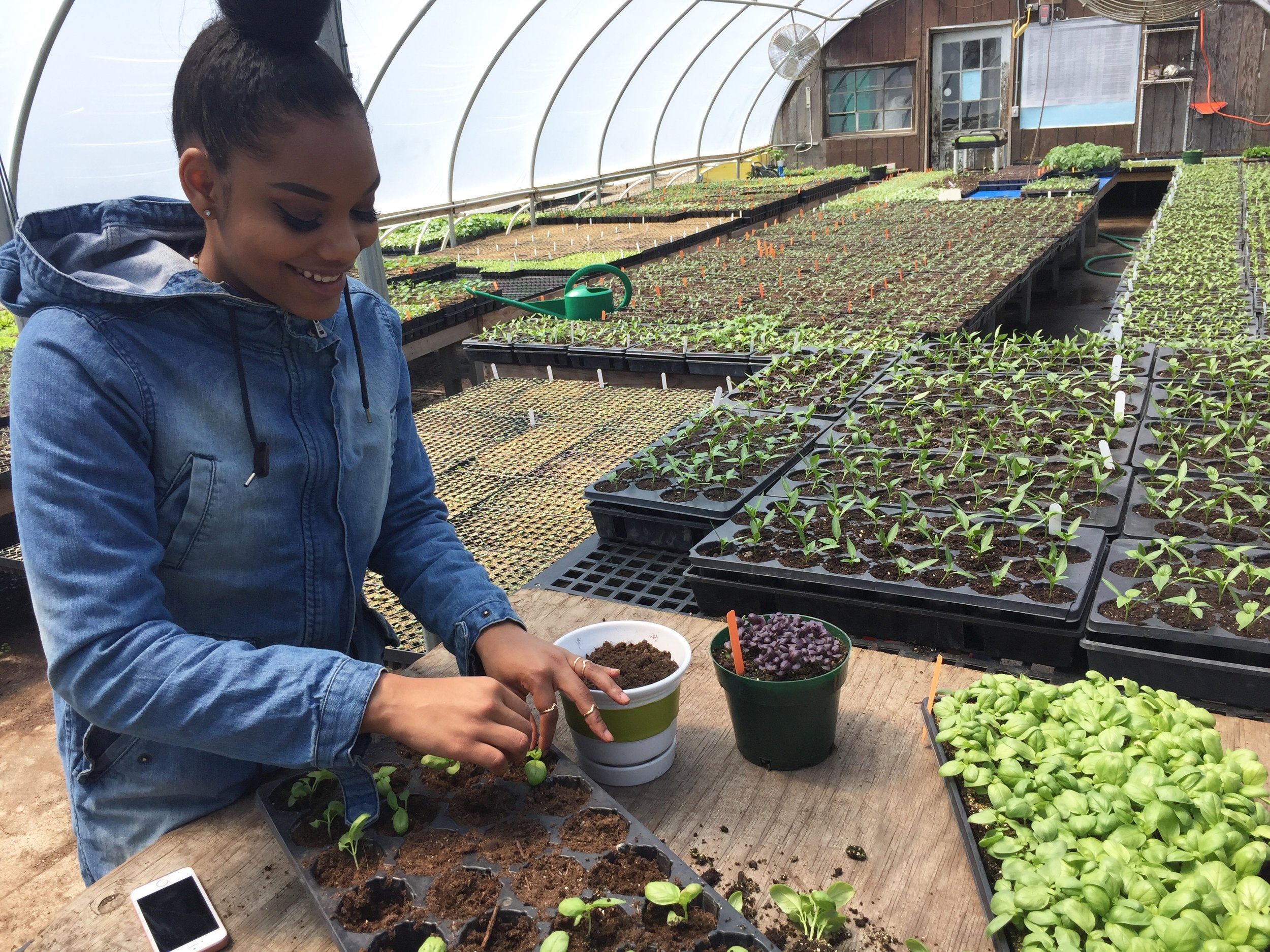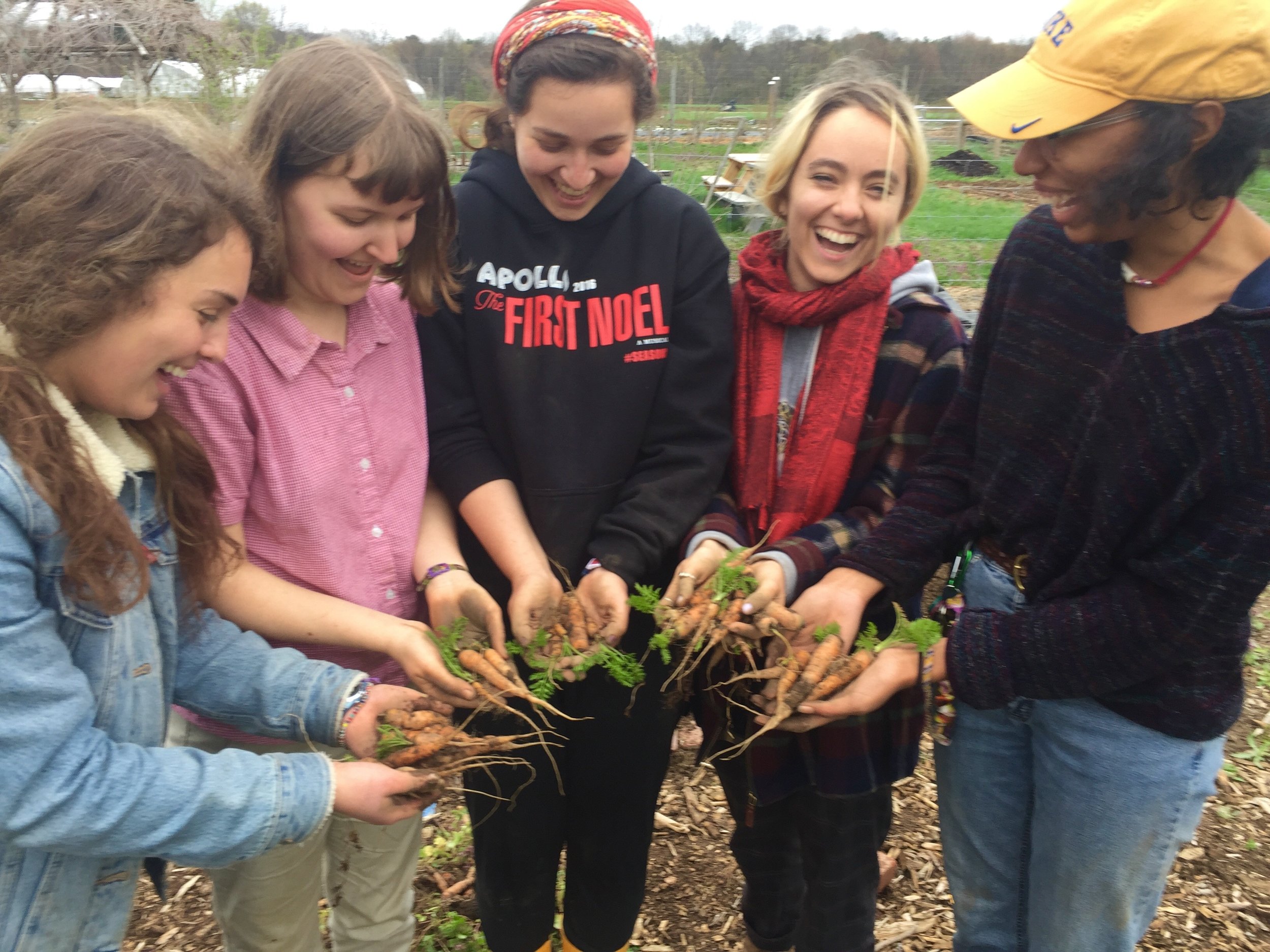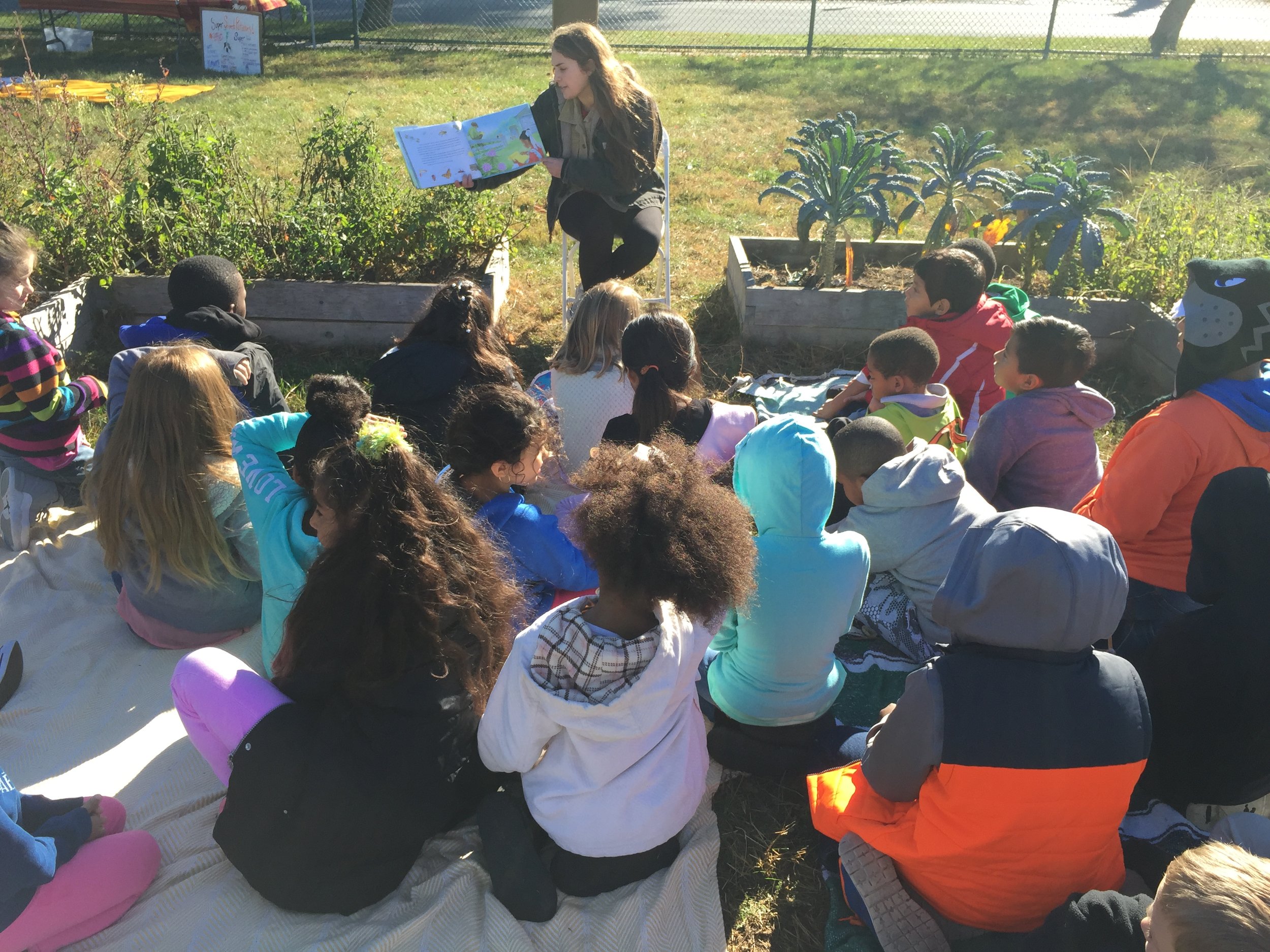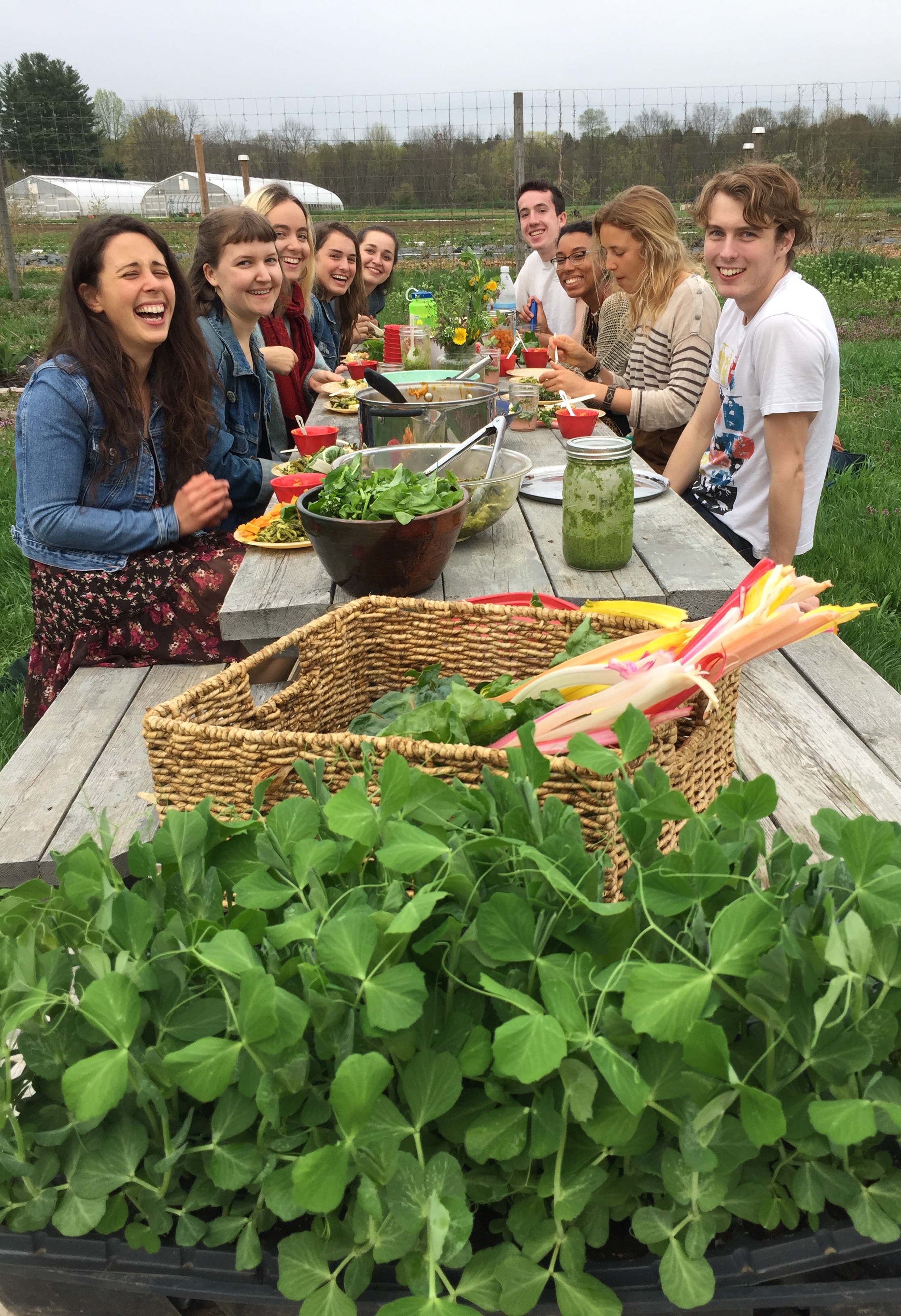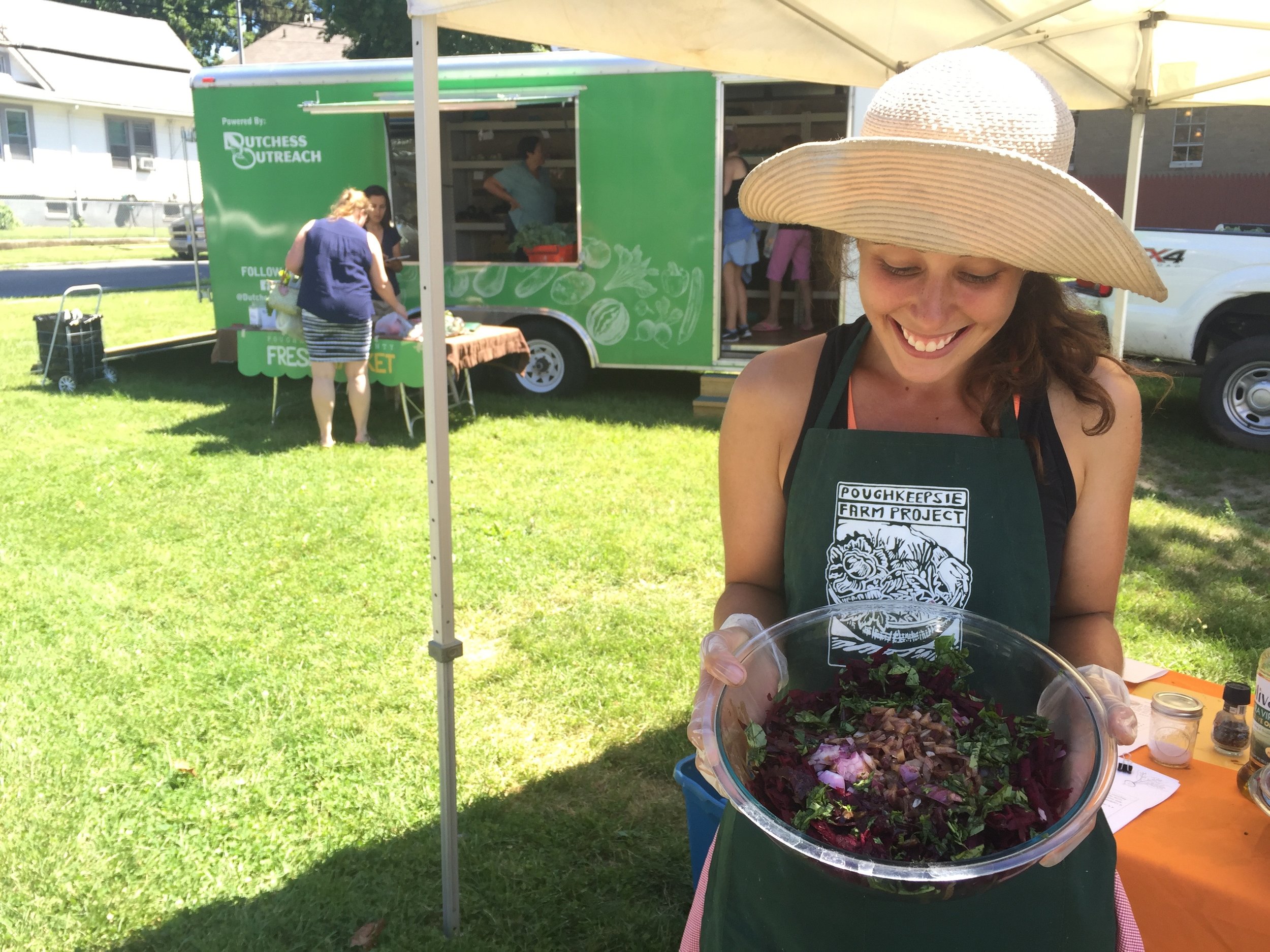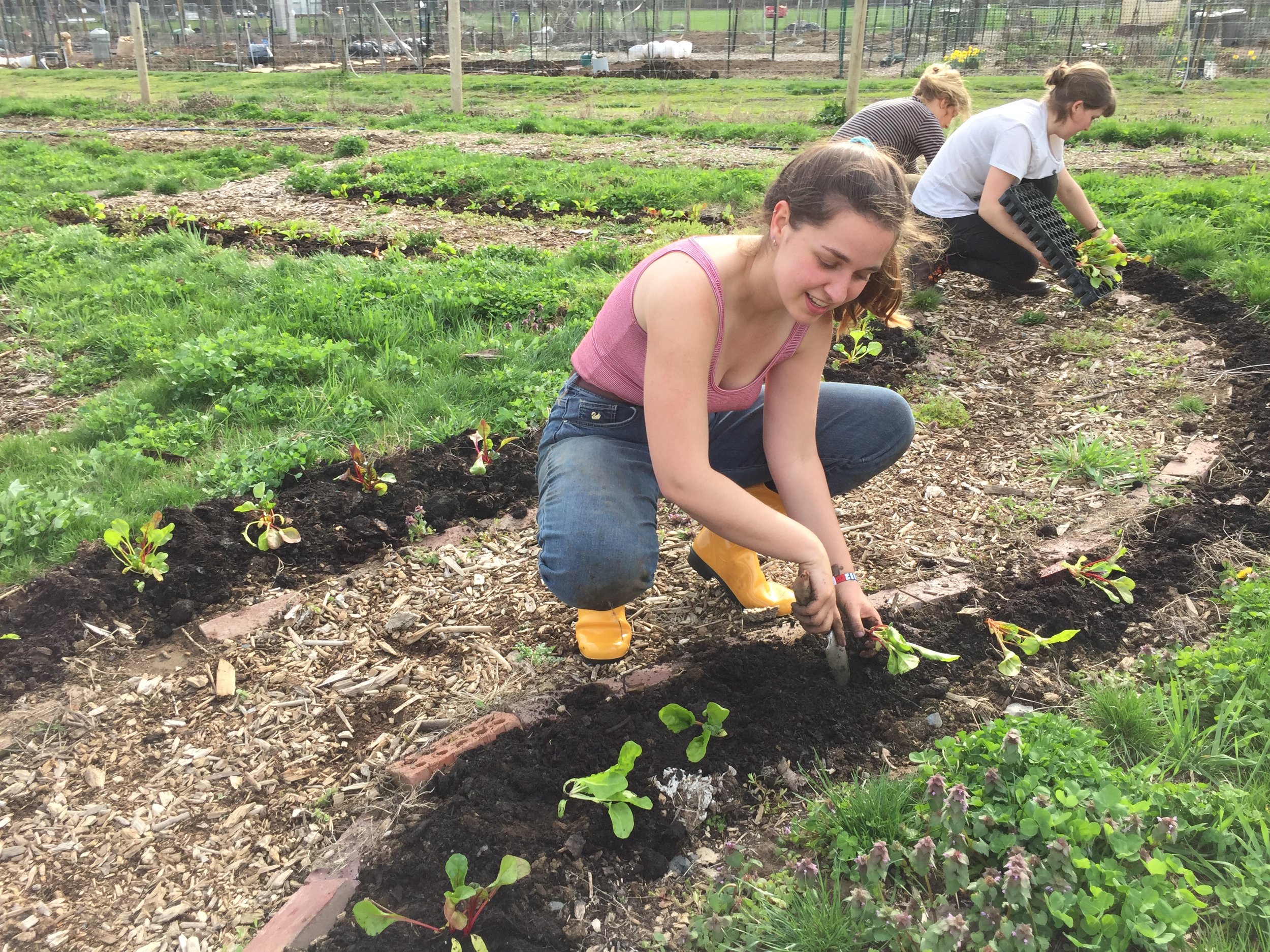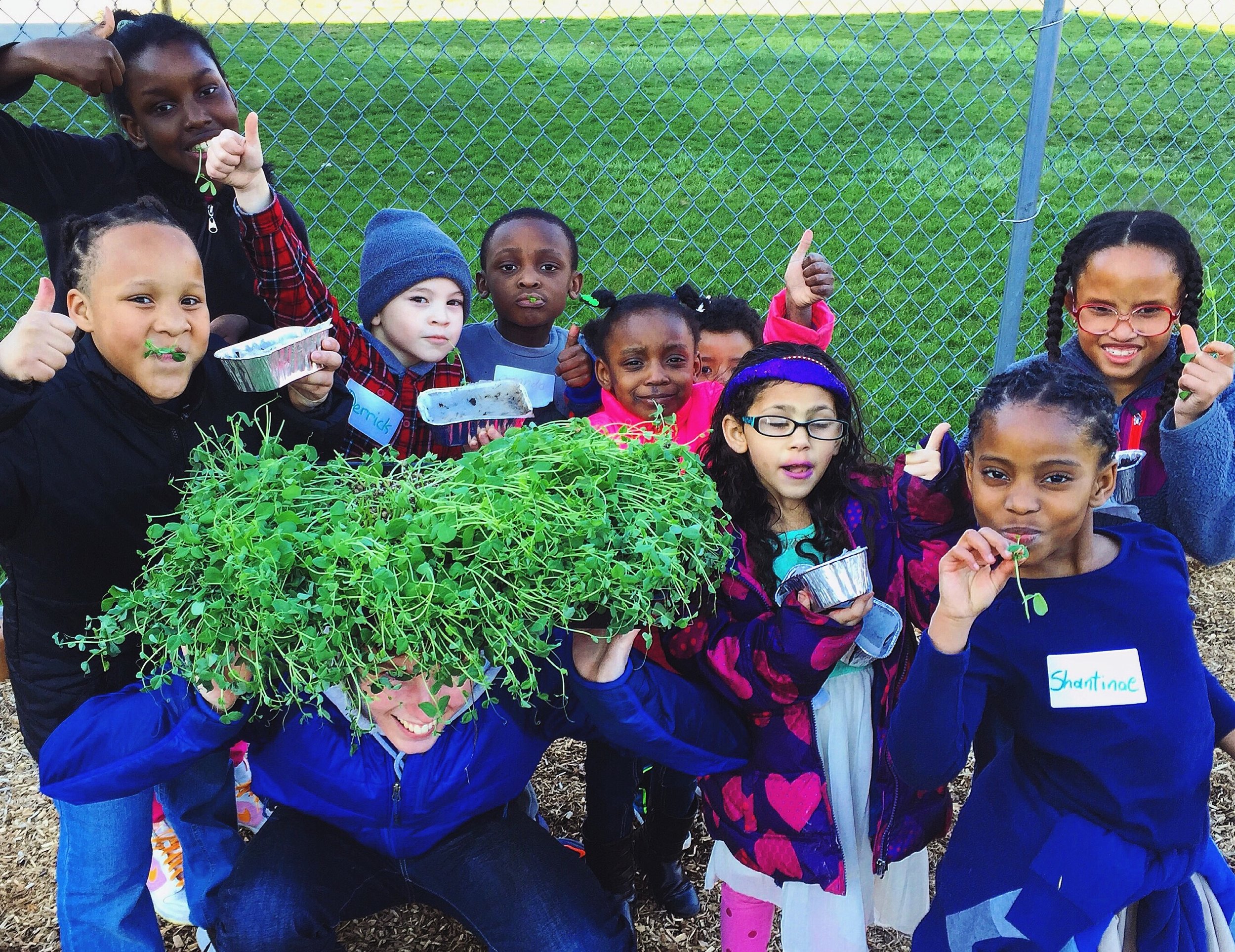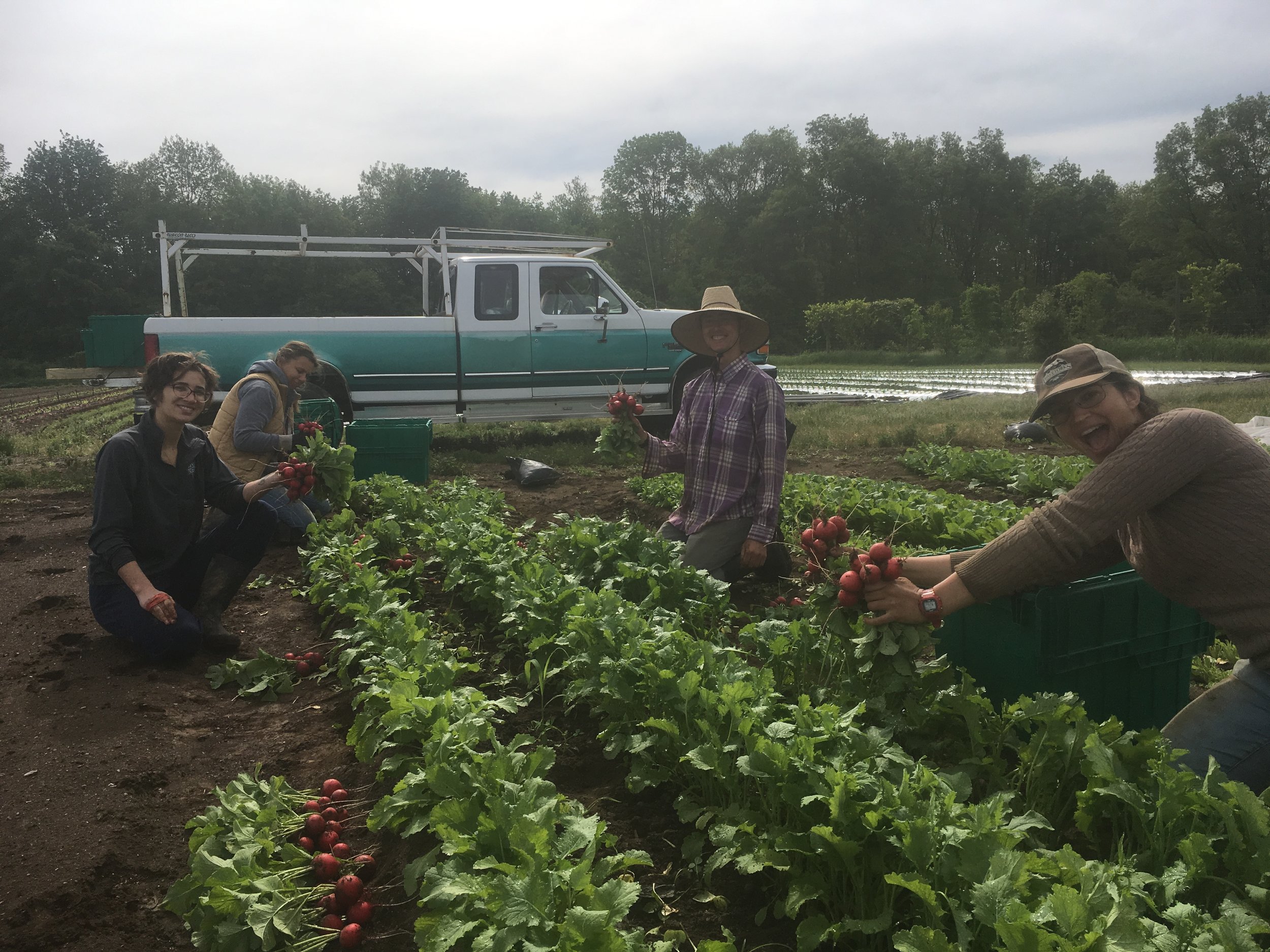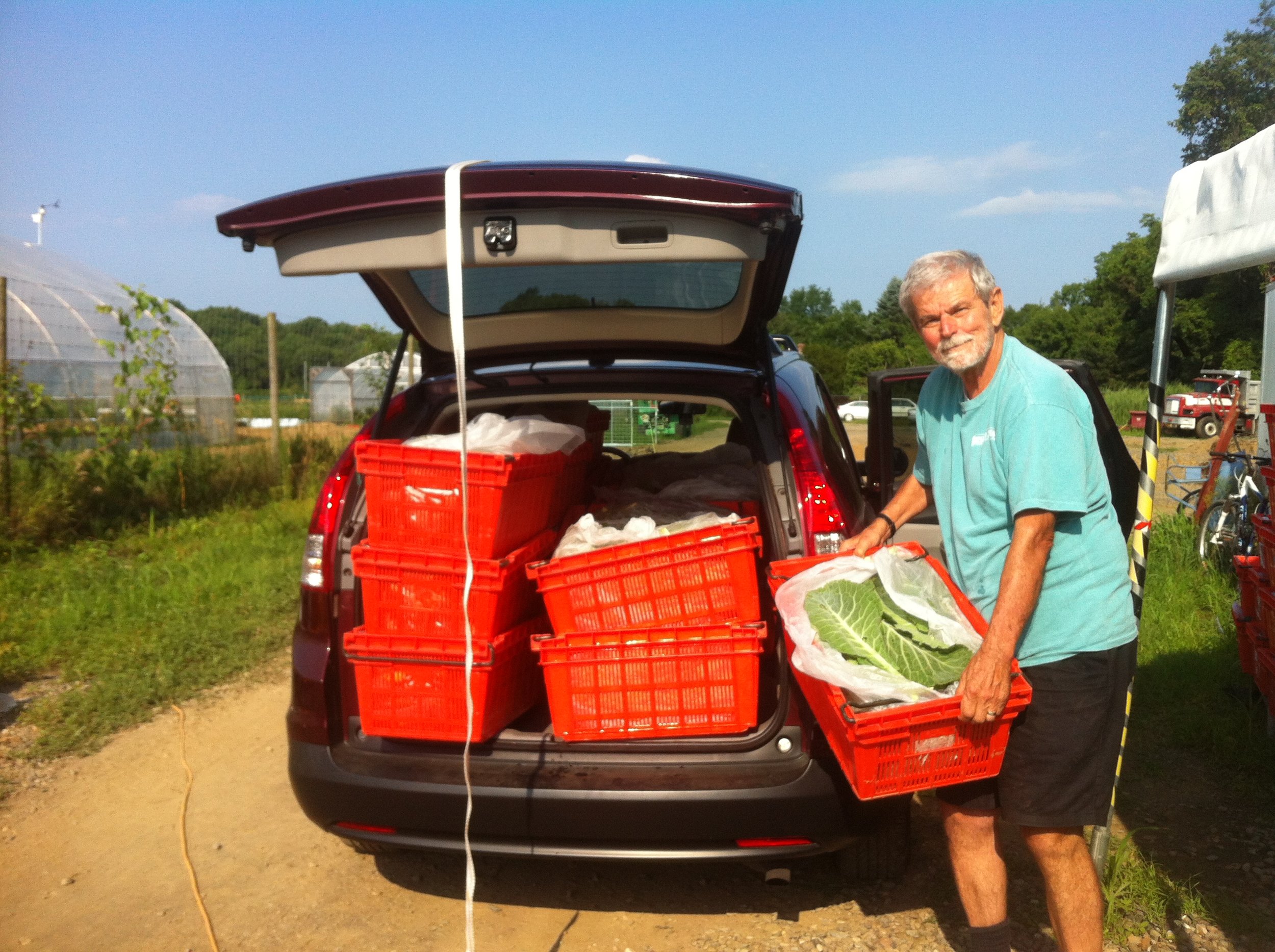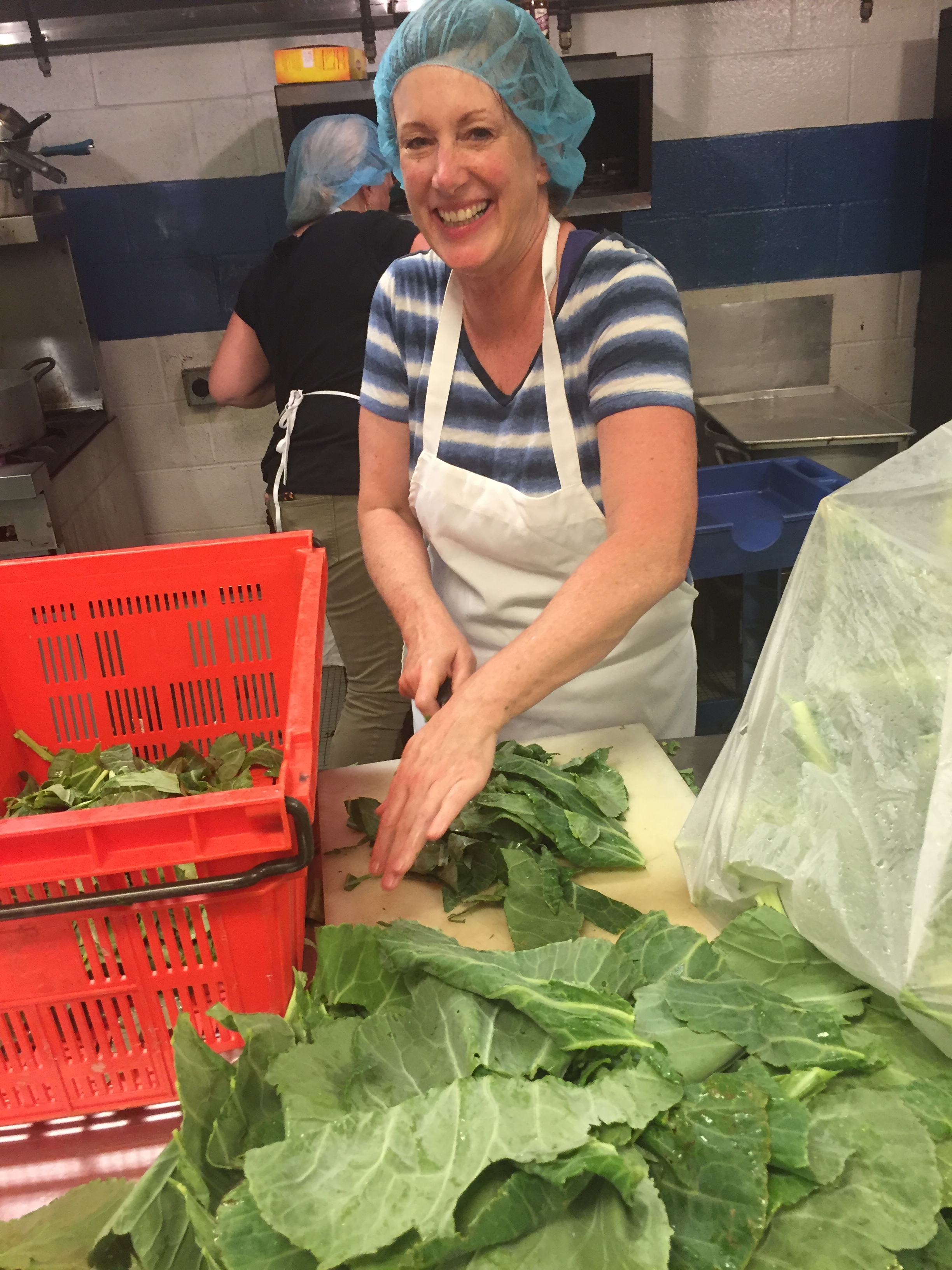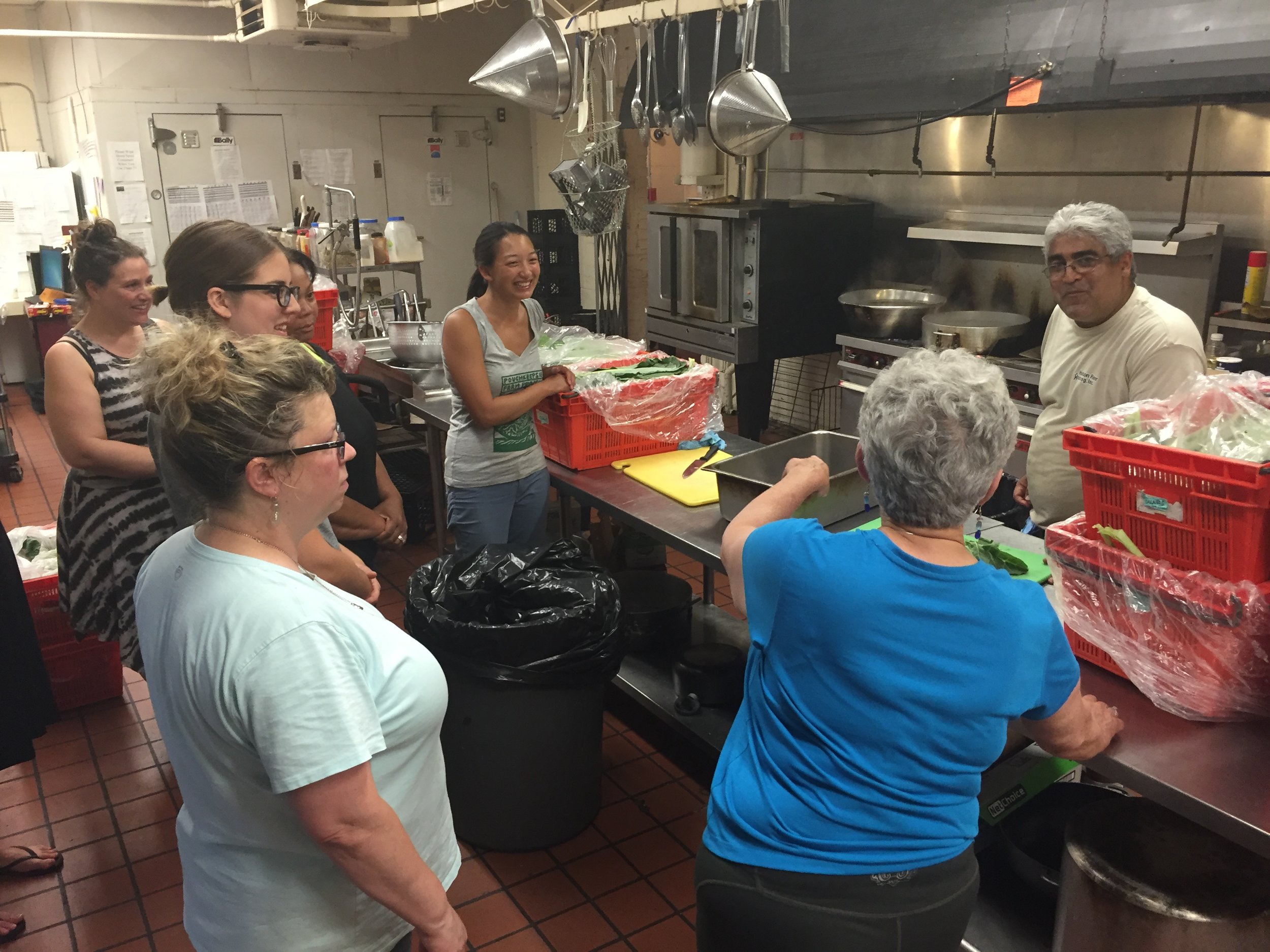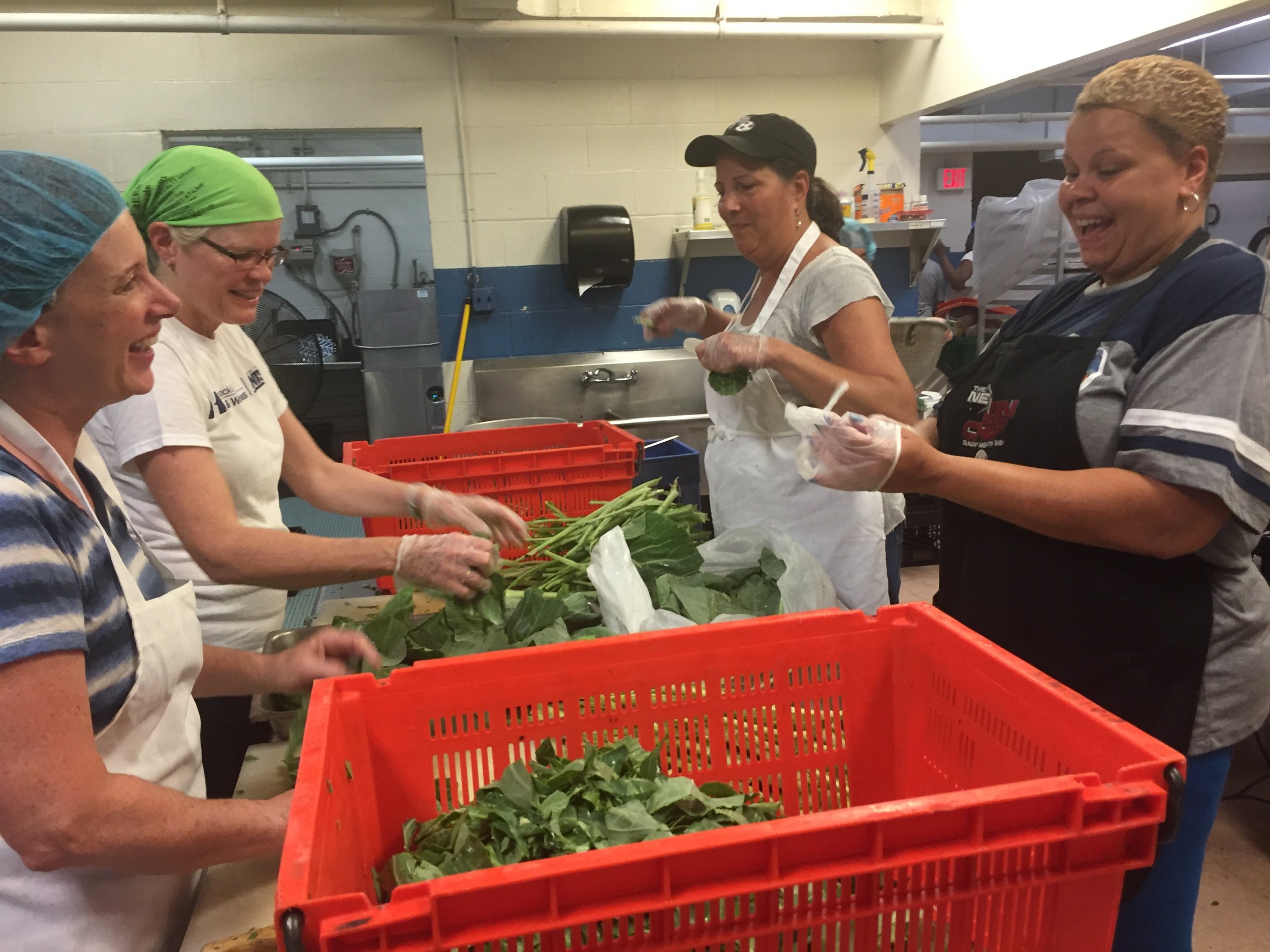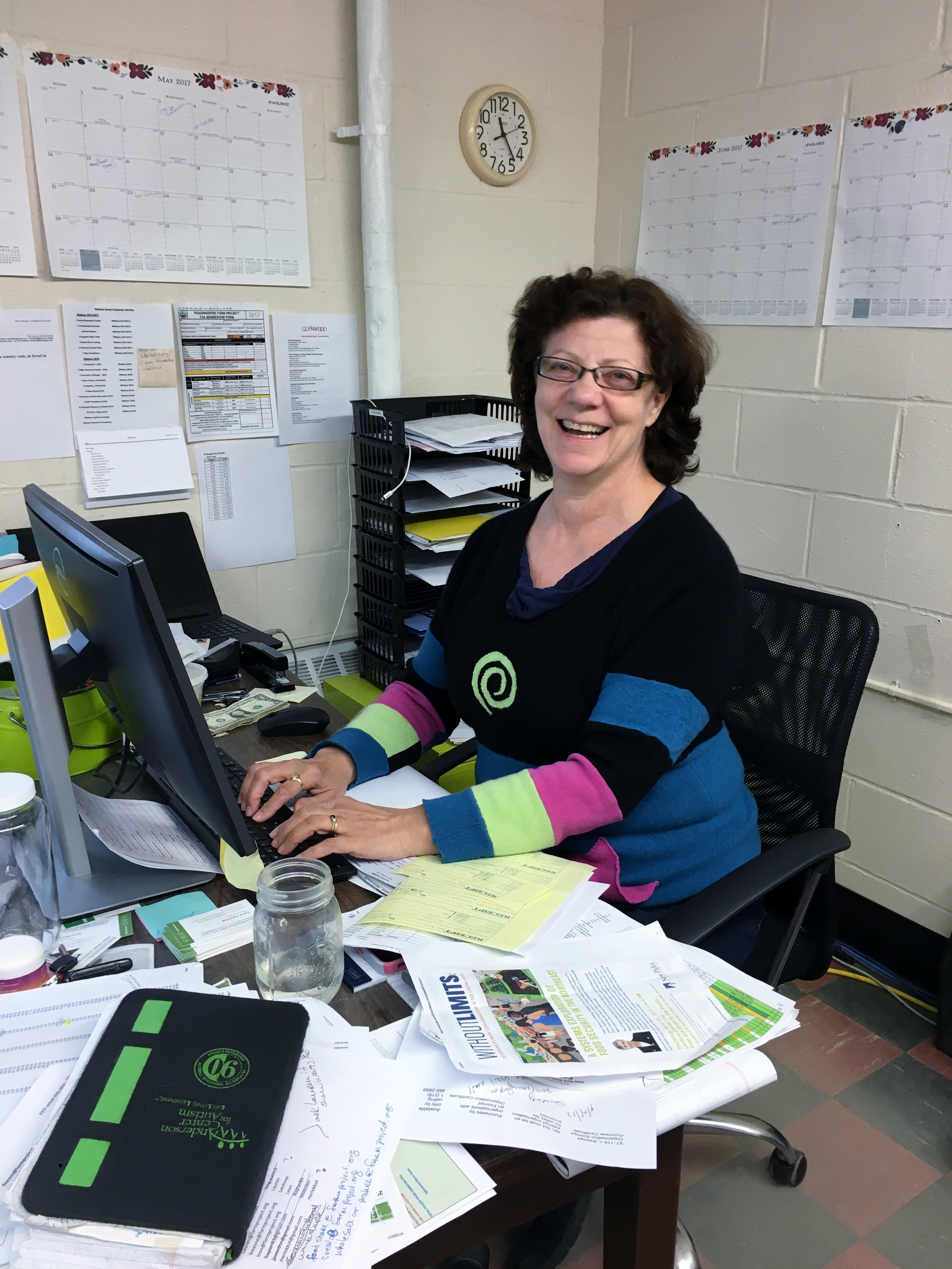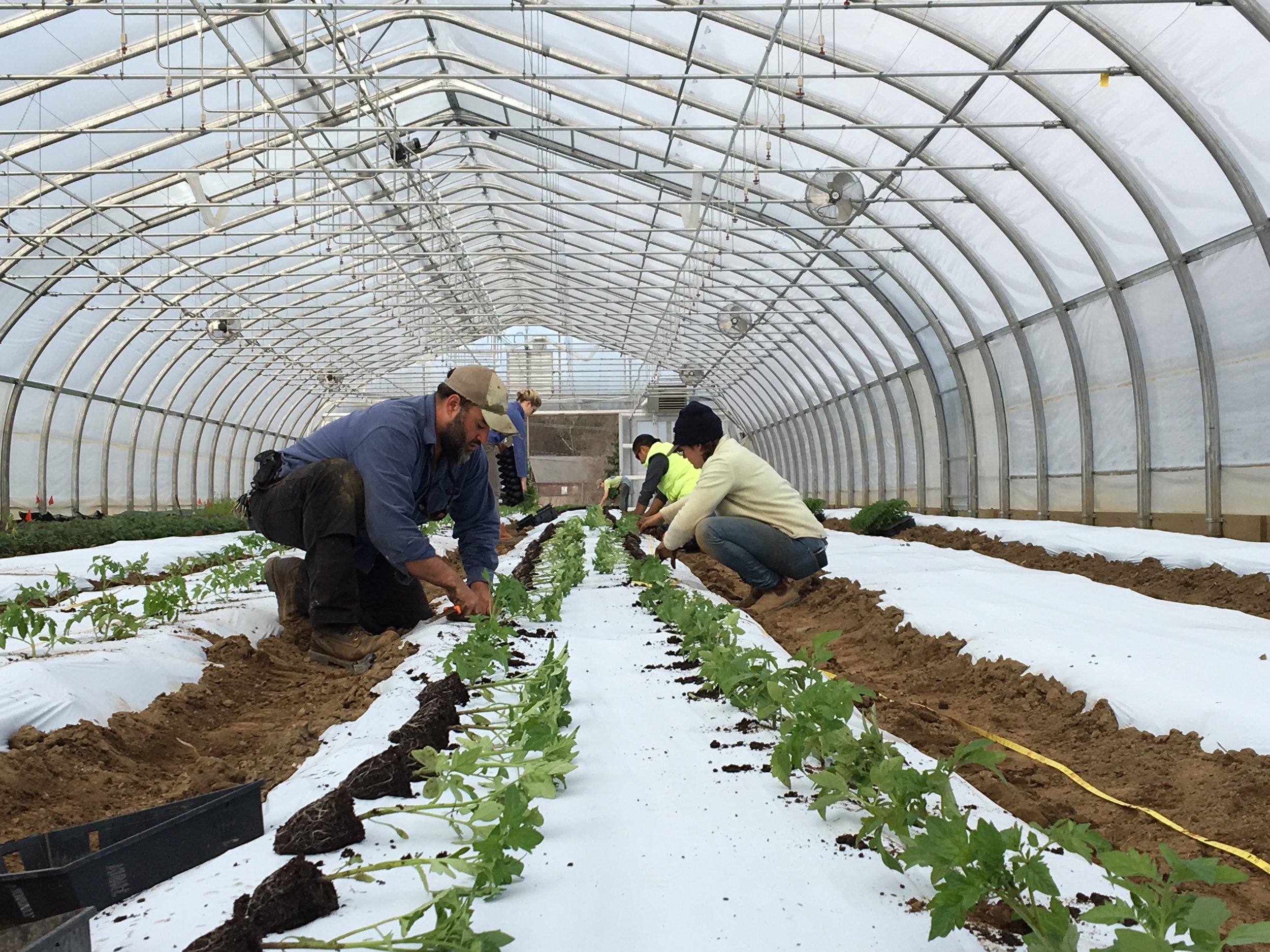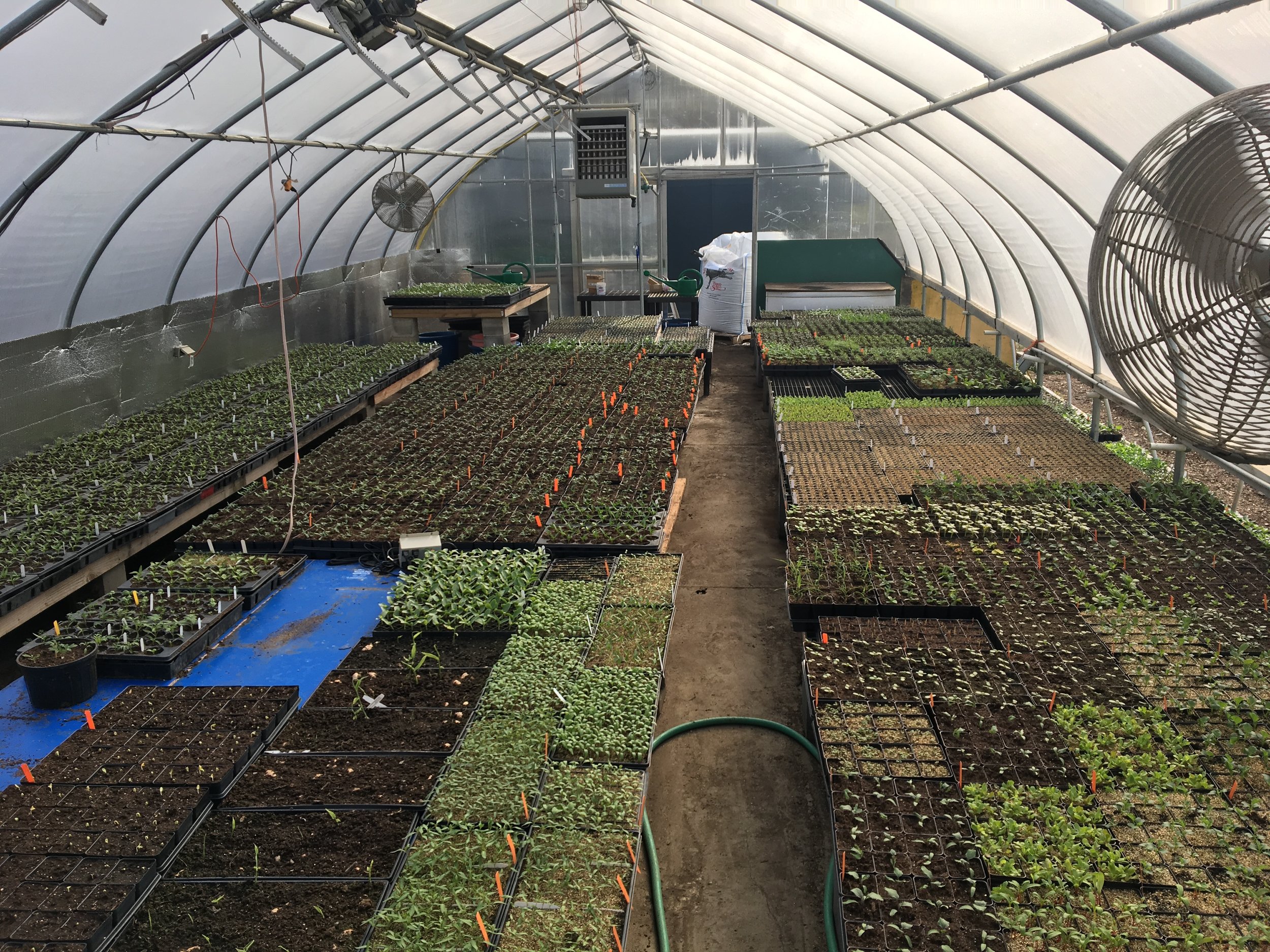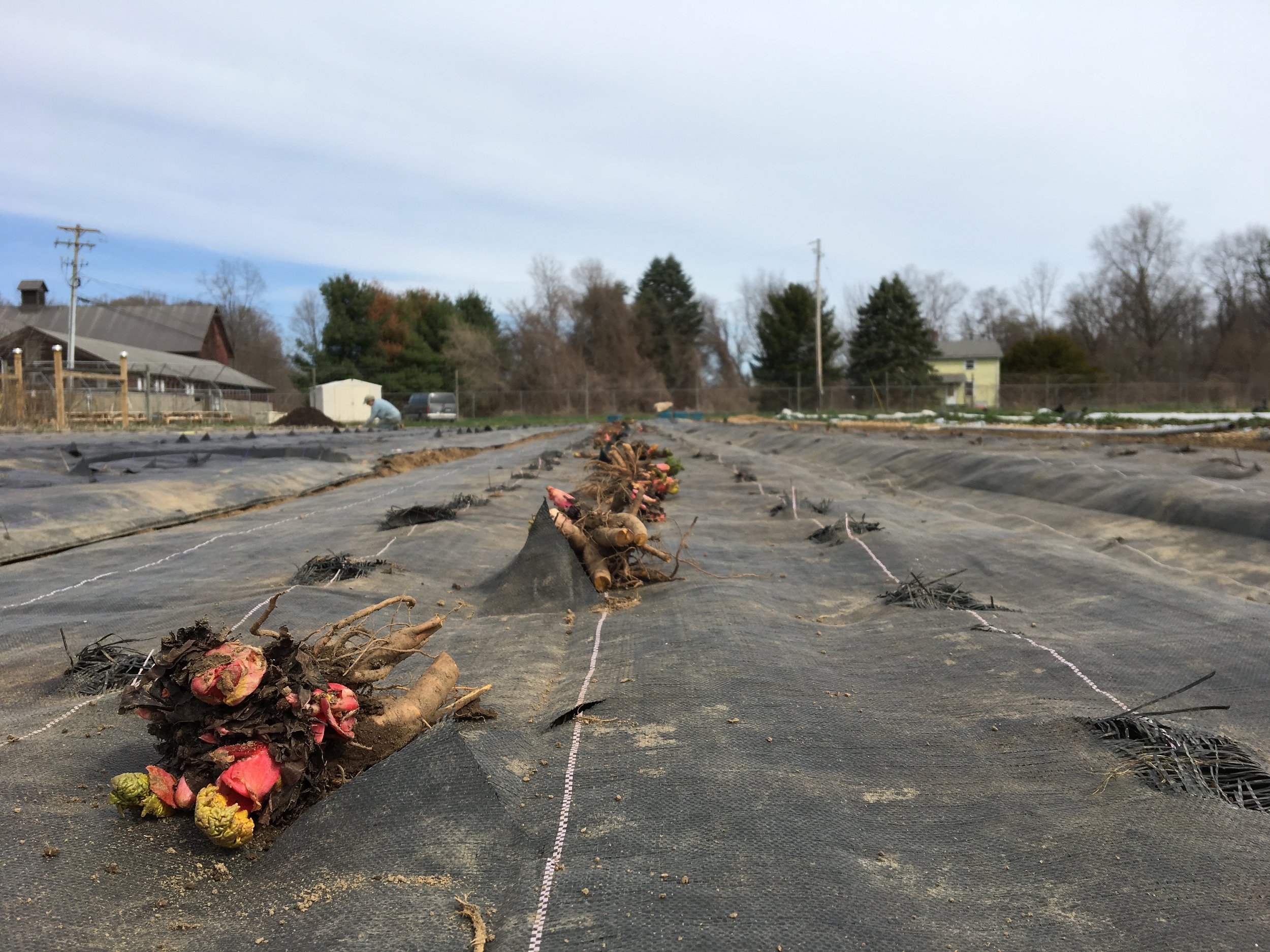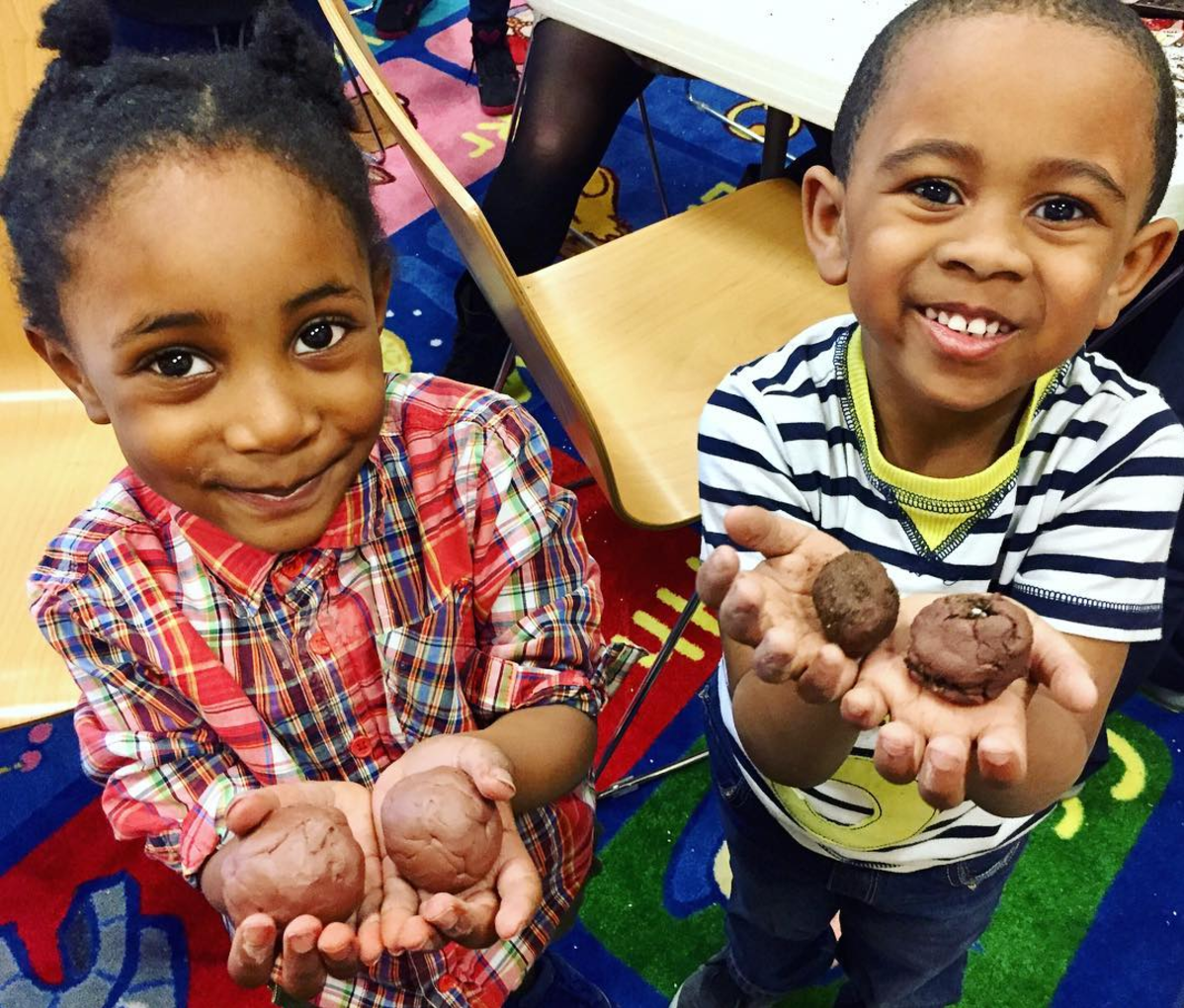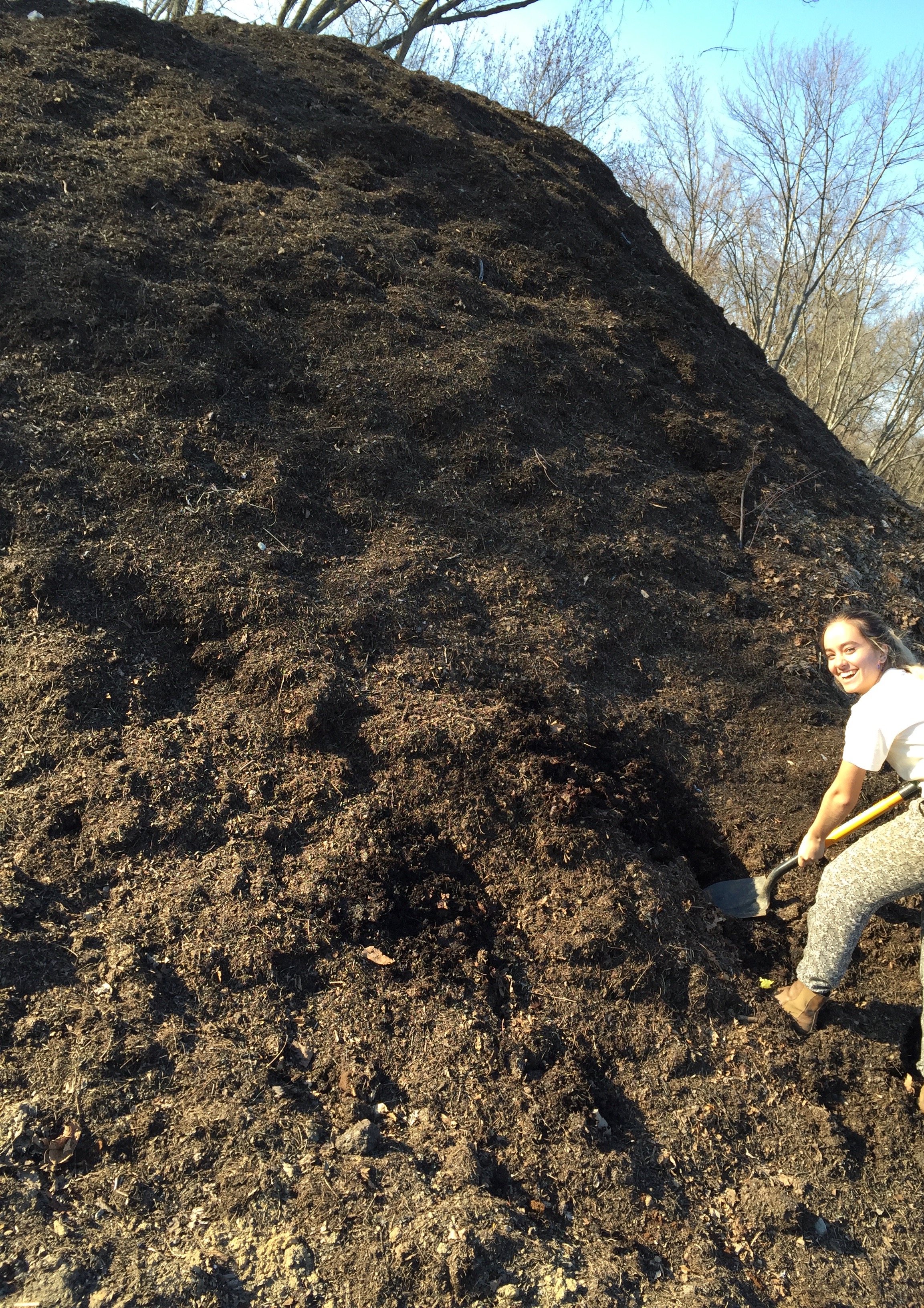By Sarah Moley, Gardens Coordinator
An herb garden can greatly improve one’s quality of life, providing everything from seasoning and flavor for food to salves, balms, teas, and herbal remedies.
Here are a couple of quick tips from our meditation herb garden to get you started:
1. Begin growing herbs from seed in your home in early spring
Many herbs can be bought, ready to go in the ground. However, starting from seed can be more cost-effective and fun. Whenever sowing herbs from seed, whether indoors or out, make sure to really soak the seeds after planting until you see sprouts beginning to peek out from the dirt.
The best thing for herbs is to have them outdoors, if at all possible. Whether it’s planting them in pots on your porch or doorstep (good for herbs like mint that love to spread, but also for any herb), or sowing them into your garden; herbs enjoy full sun. That being said, you can also plant herbs at any point in the year, from seed or from starts purchased from a garden department (or plant sale), inside your house. This can be a fun way to have culinary herbs right at your fingertips when you’re cooking. In order to make this work you’ll have to ensure that they live in a window that gets a good amount of sun, or you can purchase a grow light.
If you plan to grow an herb garden outdoors you’ll want to either start your plants from seed indoors in early spring (when it’s still too cold for many herb seedlings to establish themselves outside) or buy starts when you’re ready to plant.
If you choose to start from seed indoors it is important that before transplanting herbs into your garden that you harden them off in their pots/trays, keeping an eye on them and the weather, gradually exposing them to direct sun, cold, and more infrequent watering so that they can acclimatize to being outdoors before going in the ground.
If you plan to grow your herbs in pots, make sure that you choose vessels that allow for proper drainage. You can further aid your plants with drainage by first filling the bottom of your pots with a layer of collected rocks before adding soil.
There are many perennial herbs that, once planted, will return the next year. Common perennial herbs include: mint, thyme, sage, lemon balm, oregano, chives…etc.
Some herbs are hardy enough to be sown directly into the garden. These herbs include: dill, cilantro, and chervil. These can also be difficult to transplant, making direct sewing a good idea. Additionally, these herbs may need to be reseeded every 3-4 weeks during the summer to ensure a fresh supply.
It is important to do some research about how best to start your herbs once you’ve decided which herbs you want and where and how you want to grow them. Each herb has it’s own planting window that can vary based on which zone you live in.
2. Plant in an area that has good drainage and full sun
Herbs benefit from good drainage, which can be achieved by planting in raised beds, and even mixing in organic matter, such as compost, if you have heavier clay-soil. However, as Beatrix Clarke, the resident herbalist in our Meditation Garden says, “Herbs are actually very easy because they don’t need a whole lot of fertilization. They like barren; barren ground.”
Be sure to do your watering (as with any plant) in the mornings or evenings so the sun doesn’t fry the leaves. Keep an eye on the weather, as overwatering can make for less potency in some herbs.
3. Trim and dead-head your herbs to ensure continued growth
Most herbs are happiest, once they’ve established themselves, being pruned regularly. This shouldn’t be too hard, as you’ll want to pick sprigs for cooking and teas anyways! However, it is important to clip leaves and pinch sprigs off at leaf intersections, taking, at most, one-third of the plant’s total foliage so that it is able to regenerate.
Additionally, herbs such as sage, Thai basil, holy basil (tulsi), chives…etc. will start to channel their energies into producing flowers if they are left to do so, so trimming the flowers ensures that the plant’s energy remains imbued in the leaves. (Also chive flowers are great for salads!)
4. Harvest herbs and store
Culinary herbs can be frozen and then used year-round to add fresh flavor to any meal. You can freeze whole sprigs in a freezer bag, or simply freeze chopped herbs in water in an ice cube tray and keep in a sealed container in your freezer until you wish to use them. Then you can add them straight to the pan or pot to cook.
You can also dry herbs and brew delicious medicinal teas. As Beatrix notes, “many common culinary herbs such as sage, parsley, thyme, [and] peppermint, which are great herbs for a beginning herb garden, can also be used to combat common health issues.” She goes on to explain that teas made from thyme can be used to help treat coughs; peppermint is good for digestion; and sage for sore throats.
To dry simply lay them out on a paper bag, or place in a dehydrator (times will vary depending on the plant).
5. Use
Each herb has many different uses. Here are a couple of fun ways to use them:
- Chive butter (good on baked potatoes, steaks, and bread!)
- Lemongrass can be used in a Thai coconut soup or in a broth to poach salmon.
- Mint is delicious in fresh veggie salads; try cucumber, tomato, red onion—have fun experimenting with the flavors.
- Savory, thyme, and garlic make for a good white bean soup.
- Thai basil chicken is a great dish, or for a slightly new take on a classic, try Thai basil pesto.
- Lavender, chamomile, mint, lemon balm, nettle, Echinacea, and many many more herbs can all be made into delicious health enhancing teas by simply drying the herbs on a paper bag or in a dehydrator, then brewing them in a tea basket.
Beatrix will tell you that “Many plants we consider weeds have herbal properties that can be used for healing,” so feel free to research and experiment with all kinds of herbs after you have established your traditional favorites.
Not only that, she says that in the spring, she eats her weeds; “I make salads with lamb’s quarter; I eat a lot of nettles”—and I double-checked with her—she says you must sauté or steam the nettles first to kill their sting (anything you would normally do to cook spinach). I look forward to giving it a try (after using gloves to harvest and prepare, of course).
The best thing to do is to pick herbs that speak to you. Whether you lean more towards culinary herbs to spruce up your kitchen creations, or medicinal herbs as a safe and healthy way to boost your immune system, find the herbs that enrich your life. To your herb garden from ours, wishing you happiness and health.
References:
https://www.thompson-morgan.com/how-to-grow-herbs Accessed on July 13th
https://gg.memberclicks.net/hardening-off-plant-starts accessed on July 13th
Interview with Beatrix Clarke, July 19, 2017












